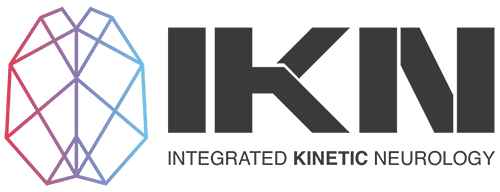
Are you Really Preparing Your Clients for the Real World?
How to shift your treatment strategies!
RESEARCH ARTICLE
As much as each of us would like to think we have the “best” way to approach pain and movement-related issues, we will always come across individuals who don’t seem to respond to our interventions. While there are certainly many reasons for this, part of the problem is that we become so focused on trying to alleviate symptoms instead of restoring the load capacity of all the subsystems that contribute towards robust movement in the real world. Real world movement doesn’t care about how well you can “activate” your glutes. Real world movement doesn’t care about how well you can set your scapula before you reach out to grasp something. Real world movement is all about the interaction between each layer of our movement control.
Current rehabilitation strategies are very “conscious driven,” and while that may be important in the short-term, too often are individuals repeatedly told that there is a right way and a wrong way to move. By loading that belief onto your client, you restrict their ability to take advantage of the interaction between the systems. You limit their ability to move without thought. You see, there exists certain parts of our nervous system that are ALWAYS aware of our body parts. If you’re standing and reading this now, you’re probably not consciously aware of what your ankles and feet are doing right now, yet you are still able to stand. The part of your brain that is most influential for this control is your Cerebellum. It constantly receives updates from the muscles and joints on a moment-to-moment basis so that we can SUBCONSCIOUSLY control the movement there. Now that I’ve just brought your CONSCIOUS attention to your ankles and feet, the Cortex (the part of your brain that houses your somatosensory map) has a bigger influence.
It is obviously important to develop that conscious awareness of our anatomy early on during rehabilitation, but continuing to rely on conscious movement strategies is not the path to robust movement. We need to allow the higher parts of the brain (cortex) to take a back seat. We teach many strategies to build that conscious awareness through movement on our courses, especially for those in pain, but once load tolerance has been established, we must progress more towards a subconscious approach. You can see from the attached article how when our movement is challenged, our brain has to devote more conscious resources towards movement control which severely limits our functional behavior. We need to allow for the subconscious layers to tolerate load too, so that when we are inevitably challenged during real world movement, we don’t feel threatened, so we can maintain robustness. Don’t get too overwhelmed by the neurology, because the key is having simple and practical ways to assess and integrate these systems as part of a graded exposure rehab approach. Our goal is to take what’s useful from applied neurology and merge it with musculoskeletal rehab to take more advantage of the systems that help promote fluid and pain-free movement.
This involves assessing the load tolerance of those systems that exist below our conscious control. It involves identifying how muscles and joints are interacting with each other to transmit and share forces well. It involves assessing the neural circuitry that runs through the muscles and joints. It involves assessing how specific body parts can drive movement of the upper limb, lower limb, and midline. And it most definitely involves identifying the load tolerance of the eyes and the vestibular systems. During rehabilitation, we don’t specifically exploit these lower control systems enough to help offer better sharing of loads for those in pain. Partly, it’s due to the fact that we don’t know how to assess them, and implement them as part of a step by step rehab approach. But, this is key if we are to build robust movement qualities and prepare our clients for real world movement. The great thing is, it’s extremely simple to incorporate this into our musculoskeletal rehab strategies and use to empower our clients further to facilitate positive change.
Assessment Tip
A very important consideration during the assessment process is to get a full picture of the clients past injuries. Remember, the cerebellum receives constant updates about the state of our body from the feedback from our muscles, joints, and other mechanoreceptors. Good quality feedback is essential to allow for subconscious control, but if we have a history of past injuries, especially around the area of their current complaint, it can help to guide our treatment process. Those areas of past injury may not be delivering quality feedback to the brain, leaving to a potential “blurring” or “smudging” of the brains representation of those areas. We may want to consider integrating them into our treatment, because if the awareness isn’t clear, then the tissues themselves are most likely not going to be happy accepting loads or forces during movement.
From our experience, the clients past injury and movement history holds the key to where they need to improve load tolerance. Hint: it’s rarely the site of their pain. The main takeaway from this assessment insight is that poor feedback from past injury sites can lead to the need for more conscious resources being devoted to movement, which does not allow for robust movement qualities. Ask the right questions and you’ll know exactly where to load.
